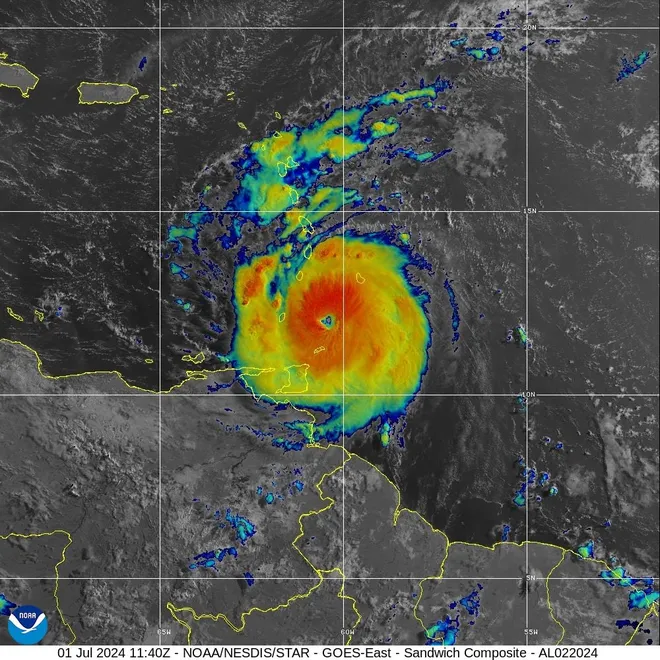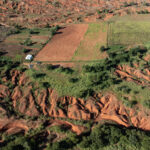In the heart of the Atlantic hurricane season, Hurricane Beryl emerged as a formidable force, leaving a trail of destruction across Grenada and several Caribbean islands. Once described as a relatively weak system, Beryl rapidly intensified, catching many off guard and setting the stage for one of the most devastating weather events in the region’s recent history. As communities grapple with the aftermath, the resilience and resolve of the affected populations are being put to the test.
Hurricane Beryl Leaves Grenada in Shambles
Hurricane Beryl made landfall in Grenada with unprecedented ferocity, unleashing torrential rains and powerful winds that uprooted trees, flattened homes, and disrupted the island’s infrastructure. The island, known for its picturesque landscapes and vibrant culture, now faces the grim reality of widespread devastation. Initial reports indicate that over 70% of residential structures have suffered varying degrees of damage, rendering thousands homeless and in desperate need of assistance.
The agricultural sector, a cornerstone of Grenada’s economy, has been particularly hard-hit. Nutmeg plantations, which account for a significant portion of the island’s exports, have been decimated, and farmers are confronting the daunting task of rebuilding their livelihoods from scratch. The loss of crops not only threatens immediate food security but also poses long-term economic challenges for the local communities dependent on this vital industry.
In the aftermath of Beryl’s onslaught, the island’s emergency services have been stretched to their limits. Rescue operations are ongoing, with teams working tirelessly to reach those trapped in remote areas and provide medical aid to the injured. The international community has begun to rally in support, but the road to recovery is expected to be long and arduous. The spirit of the Grenadian people, however, remains unbroken as they come together to rebuild their homes and lives.
Caribbean Islands Struggle to Recover from Beryl’s Wrath
Beyond Grenada, Hurricane Beryl’s path of destruction extended to several other Caribbean islands, each facing their own unique set of challenges in the wake of the storm. Dominica, still recovering from Hurricane Maria’s devastation in 2017, saw significant infrastructural damage, with roads and bridges washed away, complicating relief efforts. The island’s already fragile healthcare system has been overwhelmed by the sudden influx of patients, prompting urgent calls for international medical assistance.
In the Lesser Antilles, the islands of St. Lucia and Barbados experienced severe flooding and landslides, isolating communities and damaging critical utilities such as water and electricity. Reports from local authorities describe a dire situation, with many areas still inaccessible due to debris and downed power lines. Efforts to restore essential services are underway, but the scale of destruction means that full recovery will take considerable time and resources.
Puerto Rico, still in the throes of rebuilding after Hurricane Maria, was not spared Beryl’s wrath. The storm exacerbated existing vulnerabilities, with significant damage to infrastructure once again plunging parts of the island into darkness. Power outages, communication breakdowns, and shortages of basic necessities have reignited concerns about the island’s preparedness for natural disasters. The cumulative effect of these successive storms underscores the urgent need for comprehensive disaster management and resilience-building strategies across the Caribbean.
Hurricane Beryl’s devastating impact on Grenada and the Caribbean islands serves as a stark reminder of the region’s vulnerability to natural disasters. The immediate focus remains on rescue and relief efforts, but the long-term recovery will require substantial investment and international collaboration. As the affected communities rally to rebuild, the resilience and solidarity displayed offer a glimmer of hope amidst the widespread destruction. The pressing need for improved disaster preparedness and sustainable development strategies is clearer than ever, as the Caribbean braces for an increasingly unpredictable climatic future.









